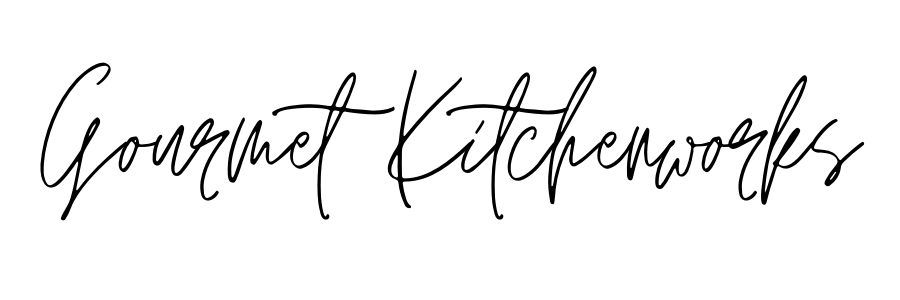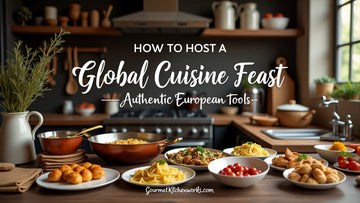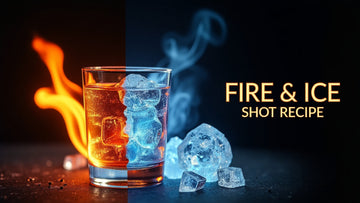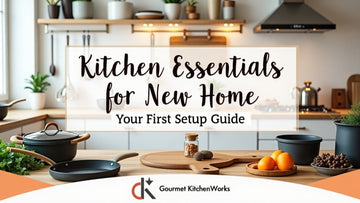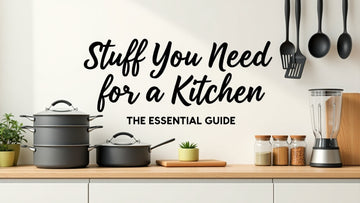Top 5 Versatile Kitchen Equipment for Every Meal
by Michele Ekins on Jul 03, 2024
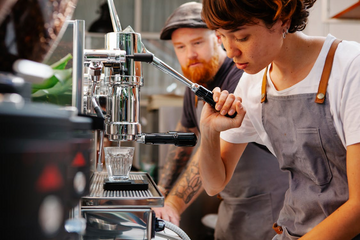
Having the correct tool makes things so much easier while making or fixing them. The same holds when preparing food. The correct kitchen utensil not only increases efficiency but also adds a whole new dimension to the pleasure of cooking. A good chef's knife is a must-have, in my opinion. Other important kitchen tools are a cast iron skillet for effortless cooking and cleaning, a sturdy cutting board for preparing food safely, a good mixing bowl set, and a heat-resistant silicone spatula for stirring and scraping. Both inexperienced and seasoned chefs may prepare meals quickly with this equipment.
1. Chef's Knife: Your All-Purpose Slicing Companion
A well-honed chef's knife is an essential component of any kitchen. Forget expensive appliances; a good 8-inch chef's knife can do it all, from slicing meat to chopping veggies. With the help of this indispensable culinary tool, you can chop onions precisely, julienne carrots with ease, and portion meat like a pro. Purchasing a quality knife not only increases meal prep but also improves safety because a dull knife demands more effort, which raises the possibility of mishaps. Choose a material like stainless steel for durability and ease of maintenance, and make sure the handle is ergonomic and matches your grip.
2. Cutting Board
Cutting boards have most likely been used by humans ever since they first opted to chop meat and vegetables using flint blades while living in caves. Essentially used for cutting and chopping, cutting boards have evolved from being only a practical chopping block to serving as presentation boards for charcuterie and other items. Nowadays, chopping boards can be constructed from a broad range of materials, some of which include antimicrobial properties. I like to use a plain wooden chopping board. A wooden cutting board can be manufactured from three different kinds of surfaces, or grains. The face grain is the lowest grade and is easily distorted. The best quality grain is the end grain, whereas the edge grain is a mid-grade grain. A common material for butcher's blocks is edge grain. Cutting boards with edge grain have less knife marks and are more resilient.
3. Cast Iron Skillet: Timeless Versatility
I am a big fan of cast iron skillets for frying steak. Meat should never be cooked in a non-stick coated pan because the fats and oils in the meat will clog the “cells” of the non-stick coating causing it to lose its non-stick properties. However, the cast iron skillet is more than just a pan – it's a kitchen heirloom. A good cast iron skillet has exceptional heat retention and even cooking, it excels at searing steaks, creating crispy pan pizzas, and baking delicious cornbread. Cast iron can handle high temperatures beautifully, making it perfect for stovetop and oven use. As it seasons over time, it develops a non-stick surface, reducing the need for unhealthy fats. This multi-functional tool is perfect for beginners and seasoned cooks alike. Just remember, cast iron requires a bit more care – proper seasoning and cleaning are key to its longevity.
4. Mixing Bowl Set
Mixing bowls are one of those items that you just have to have in the kitchen. In deciding which mixing bowls to buy, you need to determine what size, shape, and material you want or need. I wouldn’t pick plastic, silicone, or ceramic. Plastic bowls are not multi-purpose and can't be used as a double boiler for example, and silicone lacks sturdiness and can harbor off smells that may transfer to food. Ceramic bowls are nice but heavy and prone to breaking and chipping along the rim. I prefer good stainless steel due to its durability and versatility.
5. Silicone Spatulas: Flexible and Essential
Silicone spatulas are indispensable in any kitchen for their versatility and ease of use. These heat-resistant tools are perfect for scraping every last bit of batter from bowls, stirring sauces on the stove, or gently folding ingredients together. Opt for silicone spatulas with a sturdy handle and a smooth edge to ensure they withstand frequent use without scratching your cookware.
Investing in versatile kitchen equipment is an investment in your culinary journey, marking a commitment to both practicality and creativity in the heart of your home. Whether you're a novice cook setting up your first kitchen or an experienced chef upgrading your tools, these five essentials play a pivotal role in shaping your cooking experience. Beyond their functional benefits, such as precise cutting with a chef's knife or efficient cooking on a non-stick skillet, these tools foster a sense of culinary exploration and innovation. They encourage you to experiment with new recipes, techniques, and flavors, transforming ordinary meals into exceptional creations.
Ron Ekins CSFP (Certified Food-Service Professional)
Visit Gourmet Kitchen Works today to discover premium kitchen tools that cater to every cooking need. Whether you're stocking your kitchen for the first time or upgrading your existing tools, Gourmet Kitchen Works offers a selection that combines quality craftsmanship with practicality.
FAQs (Frequently Asked Questions)
Q1: What is the most widely used piece of kitchen equipment?
A: The most widely used piece of kitchen equipment is the chef’s knife.Q2: What is the most used kitchen equipment?
A: The most used kitchen equipment is also the chef’s knife due to its versatility in various cooking tasks.Q3: What are the 5 main categories of kitchen utensils?
A: The 5 main categories of kitchen utensils are cutting tools (e.g., knives), measuring tools (e.g., measuring cups/spoons), mixing tools (e.g., spatulas), cooking tools (e.g., pots and pans), and baking tools (e.g., baking sheets).Q4: What is the most useful kitchen appliance?
A: The most useful kitchen appliance varies depending on personal needs, but commonly cited ones include the food processor for its versatility in chopping, slicing, and pureeing, and the Instant Pot for its multifunctionality as a pressure cooker, slow cooker, and more.